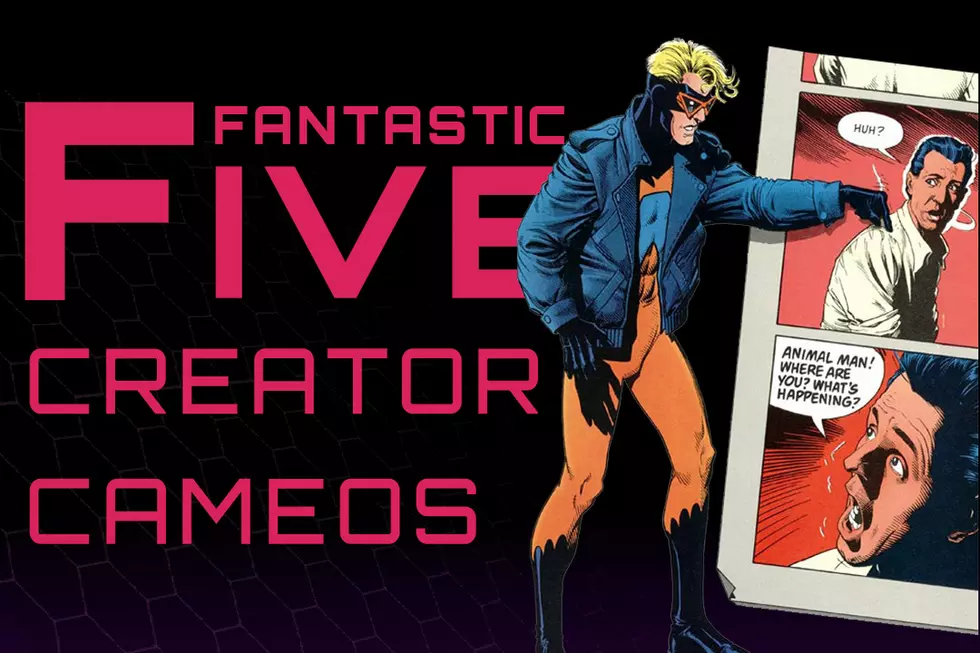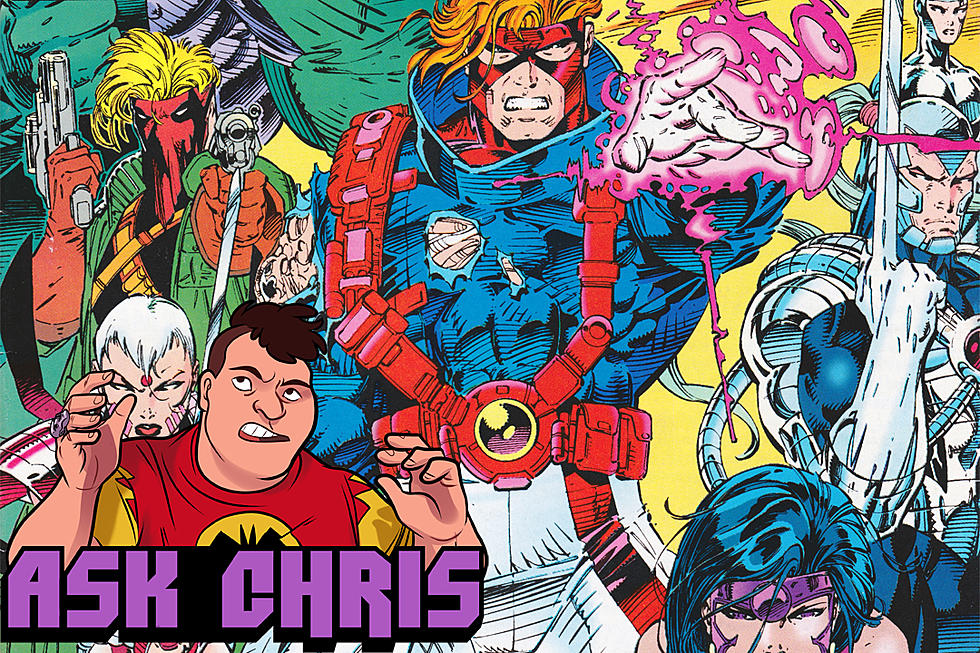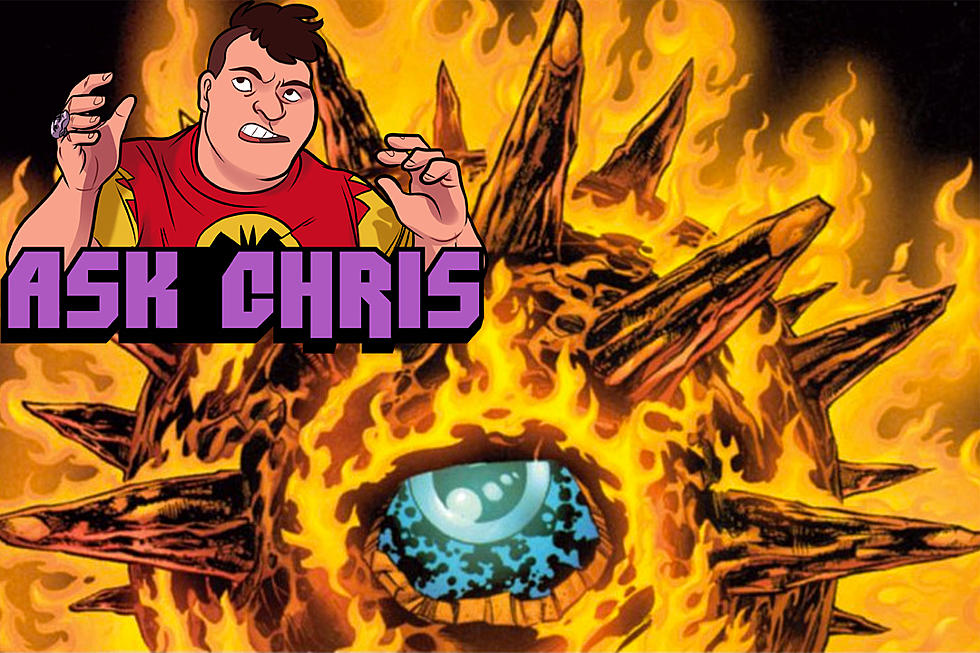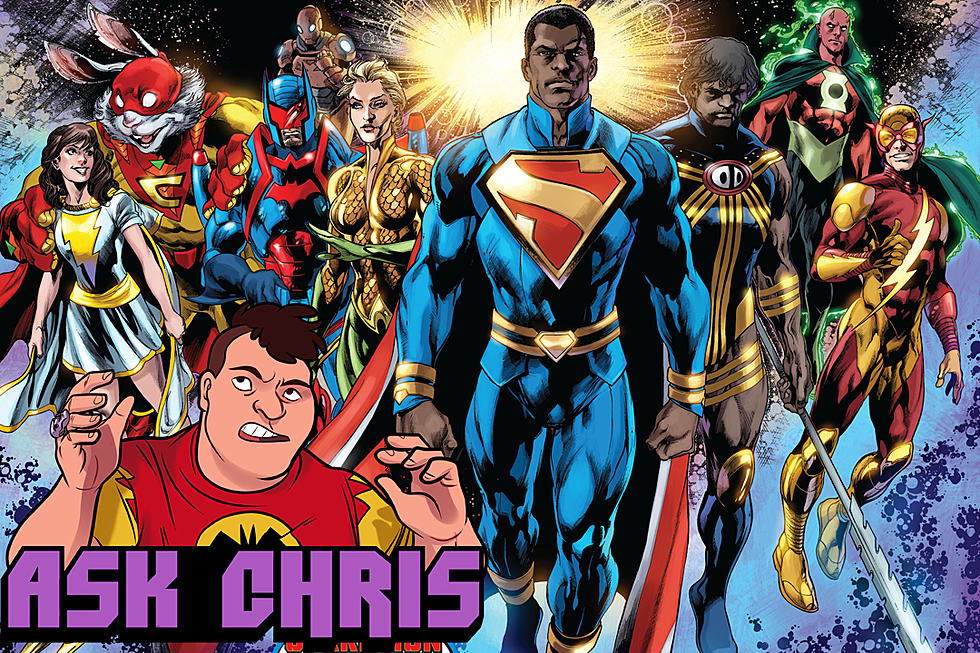
Grant Morrison Discusses ‘Batman Inc,’ Lord Death Man, and the Alan Moore Interview

It's been a big year for Grant Morrison. Between starring in a My Chemical Romance music video, contributing to the documentary "Grant Morrison: Talking With Gods," scripting the Vertigo series "Joe the Barbarian," working on a psychedelic indie film called "Sinatoro," and continuing his Batman mega-arc through "Batman and Robin," and "Return of Bruce Wayne," the superstar Scottish writer has kept up a frenetic pace with a host of projects as omnivorous and ambitious as his comic books.
After scripting a new dynamic duo composed of Dick Grayson as Batman and Bruce Wayne's son Damian as Robin, and taking Bruce himself through a time-traveling cosmic murder mystery to discover who assassinated the character of his father, Morrison is about to bring it all back home in his new book "Batman Inc," with art by Yanick Paquette. Currently slated to debut in November, the new Bat-title will see a newly-returned Bruce Wayne transforming Batman into an international brand through a series of hand-picked heroes who take up the Bat-mantle across the globe.
ComicsAlliance spoke to Morrison about the new book, the corporate philosophy of the Batman franchise, his modern take on the ideas of "Watchmen" in the upcoming "Pax Americana," and his thoughts on the controversial Alan Moore interview.

ComicsAlliance: In the second issue of "Batman, Inc." you're started to go further and further outside the established canon of Batman stories, bringing in Lord Death Man from Jiro Kuwata's unofficial Japanese "Bat-Manga" stories from the 1960s. What interested you about that story?
Grant Morrison: Oh, absolutely. I mean, I love that whole thing; I got Chip [Kidd]'s book a couple years ago... Death Man appears in the '60s in Batman in America, but just the way Jiro draws Death Man... He didn't really come to life for me until I saw how he was drawn in the "Bat-Manga" book.
You know, you're obviously familiar with it, so you know what I mean about that beautiful creepy energy of the skull... and carrying a tommy gun that just seemed so Batman-esque, you know, so perfect a villain. And the fact that they called him Lord Death Man and not just Death Man elevated him to this new kind of metric. But yeah, why not just incorporate all of that stuff into this legend of Batman so that we can kind of draw on every aspect of the character's 70 year history, and the actual publishing history as well. This story is going to be about how the Batman of the Bat-Manga comics gets his job, and it's Batman himself who recruits him.
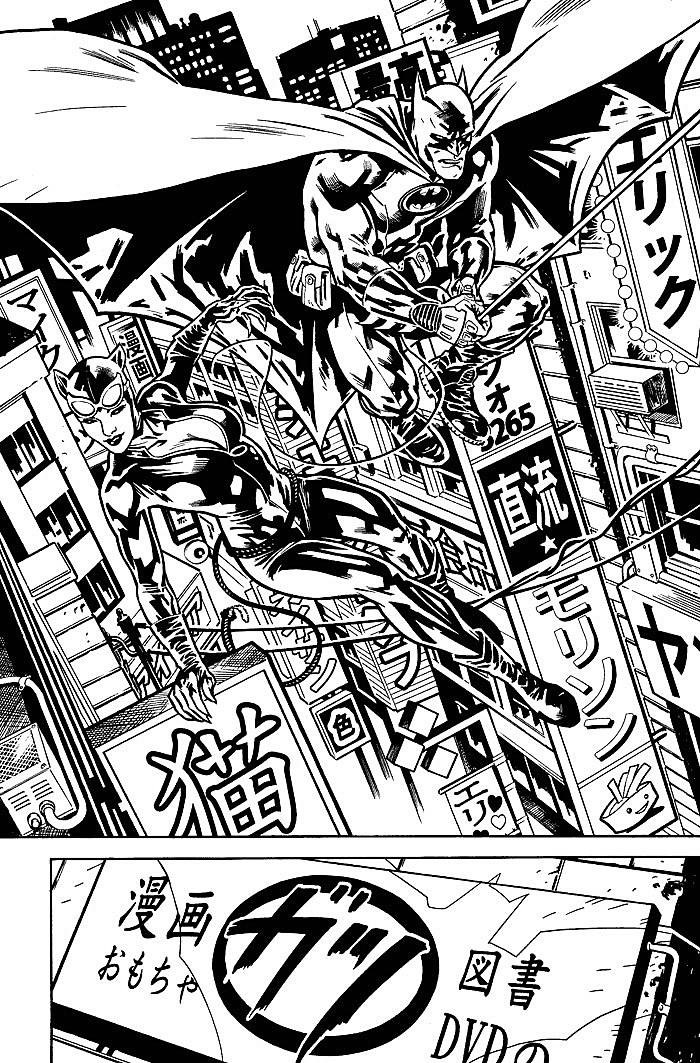 CA: You've talked a lot about the versatility of Batman, and watching the character make the jump to another country and to manga seemed like another example of how Batman can adapt to so many different spaces. Are there any other sort of fringe Batman texts that you've been looking at besides "Bat-Manga" that might have an influence on your run?
CA: You've talked a lot about the versatility of Batman, and watching the character make the jump to another country and to manga seemed like another example of how Batman can adapt to so many different spaces. Are there any other sort of fringe Batman texts that you've been looking at besides "Bat-Manga" that might have an influence on your run?
GM: Not... well, I have to think. I mean, if there's one thing that has influenced the new stuff, the "Batman, Inc." stuff, it's a book called "Becoming Batman: The Possibility of a Superhero," which is written by E. Paul Zehr. It's a guy who is a doctor, and looking into the actual possibility of Batman and what it would take to be that person in real life: What it would do to your muscles and what it would do to your head, and how long it would take to learn the martial arts. And it's really quite fascinating, this idea of the real facts behind it. So I've been looking at that, not anything in comics or any other weird version of Batman that I've found, but very much this kind of physical reality of Batman -- that's really playing into Batman's continuity build-up.
CA: When you first announced that Bruce Wayne was coming back, it seemed like it might happen in the first season of "Batman and Robin." How did the initial idea evolve into all the different threads of "Return of Bruce Wayne" and "Batman Inc."
GM: Well, it just kind of seemed natural that once Bruce was out of the way we had to have a new Batman and Robin team to take his place, and it made sense for Dick Grayson to take over, because he's been in line for along time and he also makes a great Batman. It also made sense to use the Damian character again because I've been building him up in Batman, and suddenly it seemed to be a good idea to have a Batman dynamic with a smiling happy-go-lucky daredevil Batman and a little violent, angry Robin.
And the fact that Bruce was back in time allowed me to play a little bit with all the different threads of entry which turned him into Batman. So each of the "Return of Bruce Wayne"s is a genre piece as well as a Batman story, which kind of looks at all the different pulp genres that fed the Batman idea, inspired Batman and inspired Batman's creators. We were able to do a story that was really about the character as well a story about the character as an idea, as well as a story about fiction itself and the way heroes develop through time.
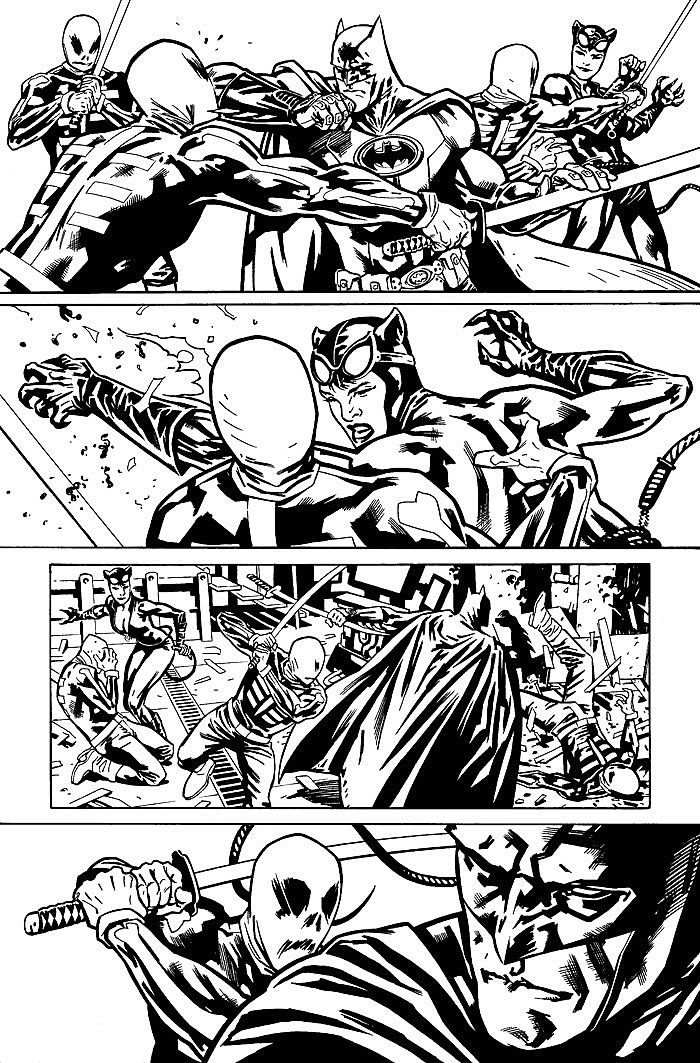 CA: Are we only going to see Batman interacting with other characters in the Bat-universe in Batman, Inc." or should we expect to see guest stars from the larger DC Universe as well?
CA: Are we only going to see Batman interacting with other characters in the Bat-universe in Batman, Inc." or should we expect to see guest stars from the larger DC Universe as well?
GM: It's mostly Bat-universe... I want to open most of the issues with a kind of opening sting like they do in James Bond movies or in the "Brave and the Bold" cartoons, where we get to see Batman having a little adventure for three minutes with someone really unexpected. So, yeah, I'm hoping to display some of those things. I haven't quite decided if there's anybody specific from outside, whether it's going to be Superman or Wonder Woman, but in the first few issues especially most of them are all Batman universe characters, with some quite surprising ones I think people might never have thought of.
CA: Now, in talking about "Batman Inc." the central idea is about Batman as a brand. And when you talk about international franchises, one of the things companies often emphasize is consistency -- this idea that you should have the same experience in McDonald's whether you're in Paris or New York or Tokyo. Is that kind of consistency important to Batman as well as he takes his brand worldwide, or will he be adapting it to the different types of places and people he finds?
GM: What's going to form a lot of the emotional strength of the story is the fact that Batman demands a certain level of commitment, and some of these people may not be able or willing to give that level of commitment. Some of them will be. Some of them will be giving even more of a level of commitment to it. It's all about people he hopes will be good allies in this new venture, but some of it won't work and some of it will. So yeah, what we're really drawing on the differences in Batman's approach to things and everyone else's.
CA: What are the necessary elements to become Batman in the eyes of Bruce Wayne?
GM: They have to have a very high, I guess, moral inflexibility. That's Batman's thing, you know? One of the first conflicts in the very first issue is this guy who's hoping to be the Batman of Japan, and at first he uses a gun just as Batman tried to do, and obviously that spoils everything because today Batman does not work with anyone who uses a gun. Batman doesn't kill, and you know, Batman has a very strict code of honor. So I think he's more looking for that, and he tries to pick people who are quite capable in their own roles, generally crimefighters or sidekicks or people he thinks could use the work. But the most important thing for him is the moral code and the heroic idea.
 CA: Another book that's sort of further out on the horizon is "Multiversity." I noticed the scene with the Archivist in "Return of Bruce Wayne" #2 that I thought might be hinting at the series. Is that *the next step in the meta-analysis of the nature of the DC Universe that has run throughout your work?
CA: Another book that's sort of further out on the horizon is "Multiversity." I noticed the scene with the Archivist in "Return of Bruce Wayne" #2 that I thought might be hinting at the series. Is that *the next step in the meta-analysis of the nature of the DC Universe that has run throughout your work?
GM: Well, there is that, and I did want to introduce my concept of time and how it works at DC, in the comic book universe and the relationship to our universe, so it was kind of written as time-as-geometry. And yeah, it played a little bit into "Multiversity," but I think all I wanted to do was to do was create a map, so you understood were my head was coming from in all this kind of stuff.
CA: One of the "Multiversity" projects is going to be "Pax Americana," which deals with some of the Charlton Heroes who were originally going to be in Alan Moore's "Watchmen." I don't know if you read the Alan Moore interview that came out a little while ago, but I feel like you've had a much more positive approach to the idea of sort of re-formatting ideas, whereas he has a certain amount of pessimism about the comic book industry and the ideas in it. Why do you think you guys have such different takes on the way that ideas are being generated or re-purposed?
GM: I mean, I couldn't speak for Alan, only what I believe, which is that [ideas] are just passing through you... As an example, in one of the stories Alan talked about, that he was kind of angry with, was where Geoff Johns had used a Green Lantern story that Alan had done as part of the "Blackest Night" story, but no one mentioned the [Alan Moore story] itself was based on the previous story by Gardner Fox... So I don't understand why a story that he wrote to plug a continuity hole in a Gardner Fox story should be any different from the Gardner Fox story. And why shouldn't Geoff be able to use standard continuity to build the culture of the DC Universe? I don't want to get into a fight with Alan; I just don't think any of us have ownership of these things, that they belong to the DC Universe, and if you add to it you should expect it to be part of that, and for it to be used again after you have left it.
CA: Right --
GM: What do you think?
CA: Well, I think it's partly the nature of comics, and even beyond that I think it's part of the nature of stories, that elements from one story are going to bleed their way into the next. There are some core archetypes and themes at the heart of most stories, and I don't think there's any way to get away from that. And I don't think there's any reason to try to get away from that. Obviously it's great to bring in fresh ideas and do things in new ways, but comics is something that has a rich, interwoven history, and it seems silly to ignore that. I think you using Lord Death Man the way you did was a fantastic example of that.
GM: But it's easy; all you have to do is refresh things. I can see why it might be wrong to go back and completely copy a story or re-use a style without any energy or without any love, but we should take the elements of a story and re-tool them... That's what Alan's doing with "League of Extraordinary Gentlemen" and that idea of this fictional landscape that you can find in other people's ideas and characters, and you can do that in the DC or Marvel universes too.
 CA: In approaching "Pax Americana," are you heading going out in a profoundly different direction than "Watchmen"?
CA: In approaching "Pax Americana," are you heading going out in a profoundly different direction than "Watchmen"?
GM: Oh, completely. The idea was to take the Charlton characters and put them in a completely different and kind of take the ideas of "Watchmen," these sort of architectural constructions, these formal ideas and apply them to a completely new story. It's not a murder mystery; it's a completely different kind of mystery that takes place today, in a world not of the Cold War, but of international terror and conspiracy, and involving a bunch of superheroes. What took were those really complex and crystalline story techniques and tried to create new versions of all those Alan Moore transitions, the little visual cues and thematic cues... and the thematic idea of a comic within a comic. So yeah, it's a new story told using updated versions of "Watchmen" techniques, which we thought it would be fun to do with the Charlton characters.
CA: Going back to Batman for a moment, your recent run has dealt a lot with the theme about the relationship between fathers and sons. From Bruce to Damian, Thomas and Bruce, and even perhaps Darkseid and Orion. So in "Batman, Inc.," with Bruce sort of setting himself up as this sort of definitive Bat-patriarch, are we going to see this theme of family continue?
GM: I think you're right about the family thing. I didn't even think about it that way with Darkseid and Orion, but that's interesting; it's all there. So, no definitely, and even looking back to the old '70s books, which were actually -- I think one of them was actually called "Batman Family," wasn't it? And it began "Batman and his Friends," and then they became all of these scary monsters and donned costumes and all those characters were running about. I kind of wanted to do a version of Batman having the allies, the Outsiders, and I realized this was a good match to be able to be able to incorporate that aspect of Batman in my stories.
More From ComicsAlliance




